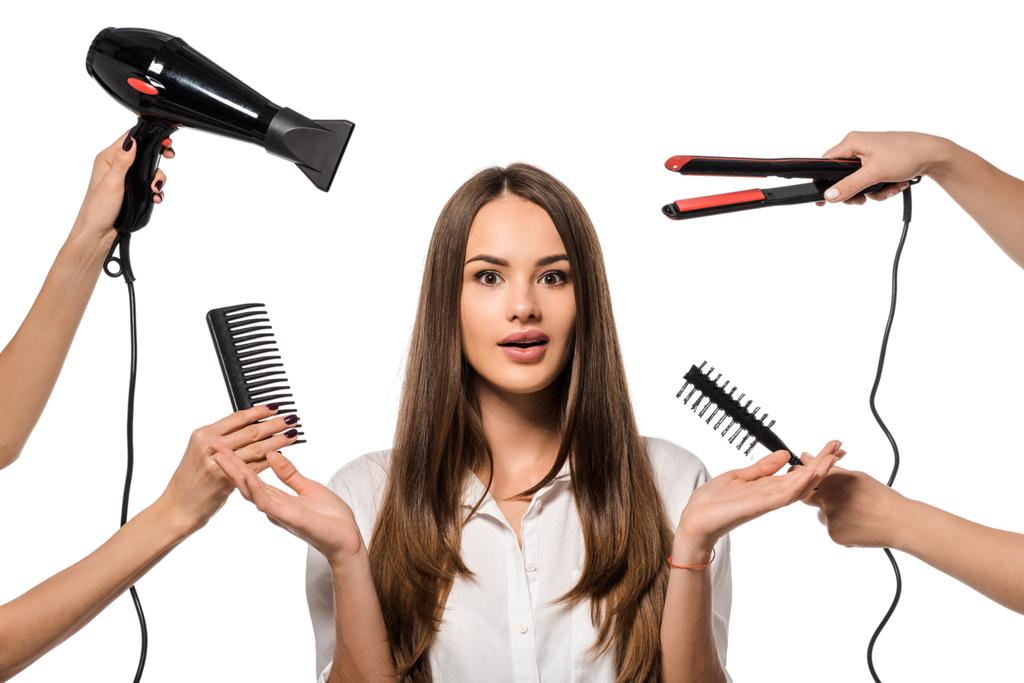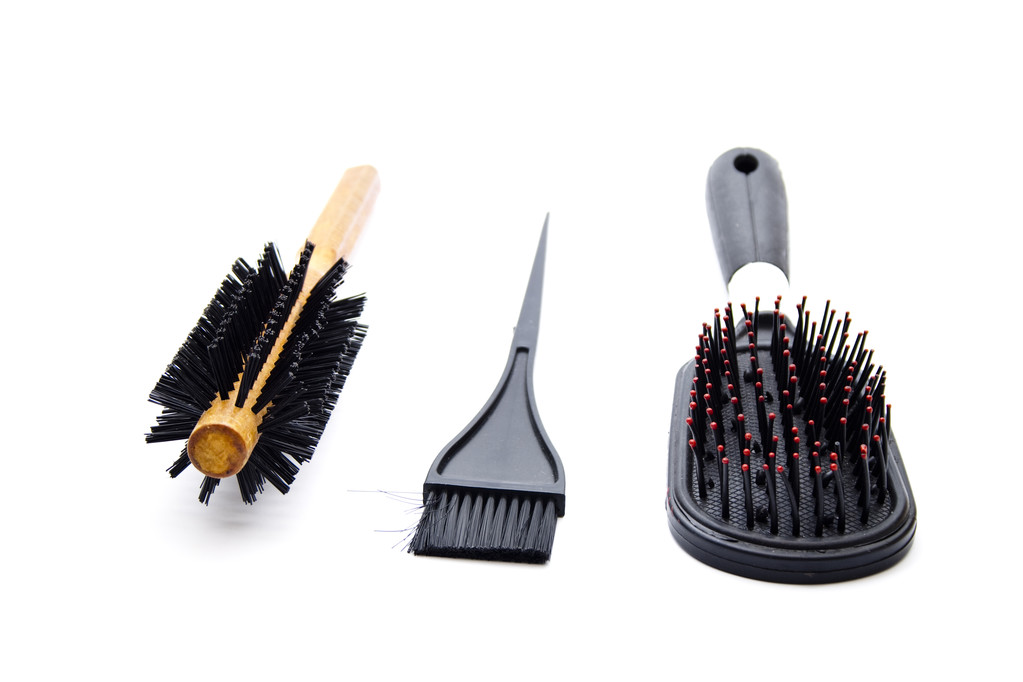Discover the ultimate guide on how to choose the perfect hairbrush or comb for your hair type and styling needs.
How to Choose the Right Hairbrush or Comb
Are you tired of your hair looking unruly and untamed? Do you spend hours in front of the mirror, trying to tame those stubborn strands, only to end up frustrated with the results? Well, fret no more! The key to achieving your dream hairstyle lies in choosing the right hairbrush or comb. Yes, it’s true! The humble hairbrush or comb can work wonders for your hair, if you know how to choose the right one. In this article, we’ll guide you through the process of selecting the perfect hairbrush or comb, and show you how to use it like a pro. So, let’s dive right in!

Understanding the Different Types of Hairbrushes and Combs
Before we jump into the nitty-gritty details, let’s take a moment to understand the different types of hairbrushes and combs that are available on the market today. Hairbrushes and combs come in all shapes and sizes, each designed to cater to specific hair types and styling needs. But fear not, we’ll demystify the world of hairbrushes and combs for you!
The Anatomy of a Hairbrush and Comb
Let’s start with the basics. A hairbrush usually consists of three main parts: the handle, the bristles, and the cushion. The handle provides a comfortable grip, allowing you to maneuver the brush with ease. The bristles, on the other hand, can be made of various materials such as nylon, boar bristle, or metal. The cushion, which lies between the bristles and the handle, provides flexibility and helps detangle your hair without causing damage.
Now, let’s dive deeper into each component of a hairbrush. The handle is often made of sturdy materials like wood or plastic, ensuring durability while providing a comfortable grip. Some handles even come with ergonomic designs, allowing for better control and reducing strain on your hand and wrist.
The bristles of a hairbrush play a crucial role in maintaining the health and appearance of your hair. Nylon bristles are commonly found in brushes and are suitable for all hair types. They are gentle on the scalp and help distribute natural oils from the roots to the ends, promoting shine and reducing frizz. Boar bristle brushes, on the other hand, are known for their ability to stimulate the scalp and distribute oils effectively. They are especially beneficial for those with dry or damaged hair.
Now, let’s talk about the cushion. The cushion is typically made of rubber or silicone and is responsible for providing flexibility and preventing excessive pressure on the scalp. It acts as a shock absorber, allowing the bristles to glide smoothly through your hair without causing any discomfort or damage.
Types of Hairbrushes
There are several types of hairbrushes to choose from, each designed to address specific hair concerns. Let’s take a look at some of the most common ones:
- Paddle Brush: Perfect for detangling long and straight hair. The wide surface area of the brush helps distribute natural oils from the roots to the ends, promoting overall hair health.
- Round Brush: Ideal for creating volume and curls. The barrel shape of the brush allows for better control and helps lift the hair from the roots, creating bouncy and voluminous styles.
- Vent Brush: Great for drying and styling hair quickly. The vents in the brush allow air to circulate, speeding up the drying process and reducing heat damage.
- Teasing Brush: Essential for adding texture and volume at the roots. The fine bristles of the brush help lift and tease the hair, creating height and fullness.
These are just a few examples, but the world of hairbrushes is vast and ever-evolving. Brushes with unique features like tourmaline-infused bristles for added shine or ion technology for reducing frizz are also available. So, don’t be afraid to experiment and find the perfect brush for your hair!
Types of Combs
Combs, on the other hand, are simple tools with teeth that are used to detangle and style the hair. Here are some common types of combs:
- Wide-Tooth Comb: Ideal for detangling wet hair without causing breakage. The wide gaps between the teeth prevent hair from getting caught and minimize damage.
- Fine-Tooth Comb: Perfect for smoothing out frizz and creating precise hairstyles. The closely spaced teeth help in achieving sleek and polished looks.
- Rat-Tail Comb: Essential for sectioning and parting the hair during styling. The long, narrow tail of the comb allows for precise and accurate parting, making it a hairstylist’s favorite tool.
- Pick Comb: Great for adding volume to curly or textured hair. The wide, pointed teeth of the comb help lift the hair at the roots, creating fullness and enhancing natural curls.
Each comb serves a specific purpose, so make sure to choose the one that suits your needs. Additionally, combs are often made from materials like plastic, metal, or wood, each offering different levels of durability and flexibility.
Factors to Consider When Choosing a Hairbrush or Comb
Now that you’re familiar with the different types of hairbrushes and combs out there, it’s time to consider a few important factors before making your final decision. Remember, not all hairbrushes and combs are created equal, and what works for someone else may not work for you. So, let’s dive into the factors that you should keep in mind.
Your Hair Type and Texture
First and foremost, you need to consider your hair type and texture. Is your hair thick or thin? Straight or curly? Fine or coarse? The answers to these questions will guide you in selecting the most suitable brush or comb for your hair. For example, if you have thick and curly hair, a wide-tooth comb or a pick comb would be your best bet for detangling and defining your curls.
Your Desired Hairstyle
Another important factor to consider is your desired hairstyle. Are you aiming for sleek and straight locks, or do you want to add volume and bounce to your hair? Different brushes and combs can help you achieve different styles. For example, a round brush is perfect for creating voluminous curls, while a paddle brush is great for achieving a smooth and straight look.
The Material of the Hairbrush or Comb
The material of the hairbrush or comb is another crucial factor to consider. Different materials offer different benefits and suit different hair types. For example, boar bristle brushes are excellent for distributing natural oils and adding shine to your hair. On the other hand, nylon bristles are great for detangling and are more suitable for thick or textured hair.
How to Properly Use a Hairbrush or Comb
Now that you’ve chosen the perfect hairbrush or comb, it’s time to learn how to use it like a pro. Using the right techniques and being gentle with your hair can make all the difference in achieving a flawless hairstyle. Let’s explore some tips and tricks!
Brushing Techniques for Different Hair Types
The way you brush your hair can greatly affect the end result. Here are some techniques for different hair types:
- For straight hair: Start at the roots and gently brush down, working your way to the ends. This will help distribute natural oils and prevent breakage.
- For curly hair: Use a wide-tooth comb or your fingers to detangle your hair. Avoid brushing too much, as it can disrupt your curl pattern.
- For thick hair: Divide your hair into sections and brush each section individually. This will make it easier to detangle and style your hair.
Comb Usage Tips
If you’re using a comb, here are some tips to keep in mind:
- Start from the ends and work your way up to the roots to avoid causing damage or breakage.
- Be gentle and patient, especially when detangling wet hair. Wet hair is more prone to breakage, so take your time and be extra careful.
- Use a detangling spray or conditioner to make the combing process easier.
Maintaining Your Hairbrush or Comb
Your hairbrush or comb works hard to keep your hair looking fabulous, so it’s important to give it some love and care in return. Regular maintenance will not only prolong its lifespan but also ensure that it continues to work effectively. Let’s delve into some maintenance tips!

Cleaning Your Hairbrush or Comb
Over time, hair, product buildup, and oils can accumulate on your brush or comb, making it less effective. To clean your hairbrush or comb, follow these simple steps:
- Remove any hair from the bristles or teeth of the brush or comb.
- Fill a bowl with warm water and add a few drops of mild shampoo.
- Swirl the brush or comb in the soapy water, making sure to clean all the bristles or teeth.
- Rinse the brush or comb thoroughly with clean water.
- Leave it to air dry completely before using it again.
Regularly cleaning your hairbrush or comb will prevent product buildup and keep your hair looking its best!
When to Replace Your Hairbrush or Comb
Just like any other tool, hairbrushes and combs have a lifespan. Over time, the bristles may start to wear out or break, making them less effective. If you notice that your brush or comb isn’t performing as well as it used to, it’s time for a replacement. As a general rule of thumb, consider replacing your hairbrush or comb every six to twelve months, or whenever you notice signs of wear and tear.
Expert Tips for Choosing and Using Hairbrushes and Combs
Now that you’re armed with the knowledge of choosing the right hairbrush or comb, let’s dive into some expert tips and advice to take your hair game to the next level!
Advice from Professional Hair Stylists
Who better to turn to for hair care advice than professional hair stylists? Here are a few nuggets of wisdom from the experts:
“Invest in high-quality brushes and combs. They may be pricier, but they’ll last longer and give you better results.”
“Don’t be afraid to experiment with different brushes and combs. What works for someone else may not work for you, so find what suits your hair best.”
“Be gentle with your hair and avoid aggressive brushing or combing. Your hair is delicate, and excessive force can cause damage.”
Common Mistakes to Avoid
Lastly, let’s take a look at some common mistakes that people make when it comes to choosing and using hairbrushes and combs:
- Using the wrong brush or comb for your hair type.
- Brushing or combing aggressively, causing breakage.
- Not cleaning your brush or comb regularly.
- Using a brush or comb that is past its expiry date.
Avoiding these mistakes will ensure that your hair remains healthy and fabulous!
So there you have it, a comprehensive guide to choosing the right hairbrush or comb. Armed with this knowledge, you’re ready to tackle any hair challenge and achieve the hairstyle of your dreams. Remember, your hair deserves the best, so choose wisely and brush with confidence!





